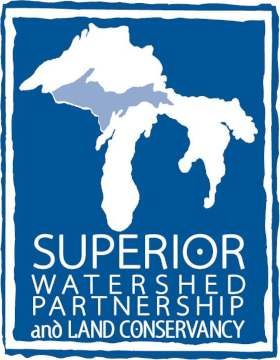Water Quality and Stormwater Management
WHY STORMWATER MANAGEMENT MATTERS
Stormwater is the rain and melting snow that runs off of our lawns, our roofs, our roads, our parking lots–our watersheds. In Marquette, virtually all of this stormwater ends up in Lake Superior, either through natural drainage or through the stormwater drains you see along the roadside. Did you know that there are over 3,000 storm drains in Marquette?
Over the coming months the Superior Watershed Partnership, in cooperation with the City of Marquette, will be providing additional stormwater education resources for city residents and business owners, including simple things (and a few slightly more technical things) you can do around your home or business to keep stormwater runoff as clean as possible!
Stormwater education topics include: around the house, lawn and garden care, pet waste, how to install a rain garden, water conservation techniques, reducing cigarette butt litter, and new community engagement opportunities. These educational articles will be printed locally and will also be available on the city website (www.marquettemi.gov) and the SWP website (www.superiorwatersheds.org).
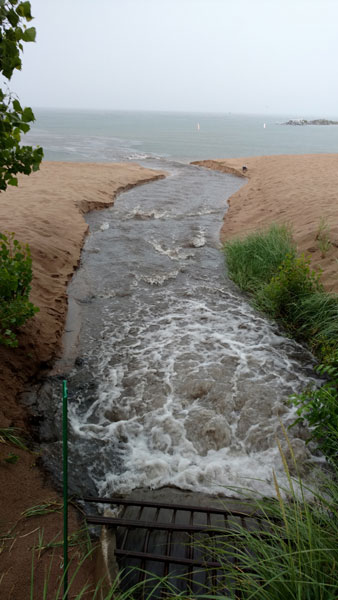
We all have a role in keeping stormwater clean and protecting Lake Superior! Remember: stormwater is a resource, not a waste product!
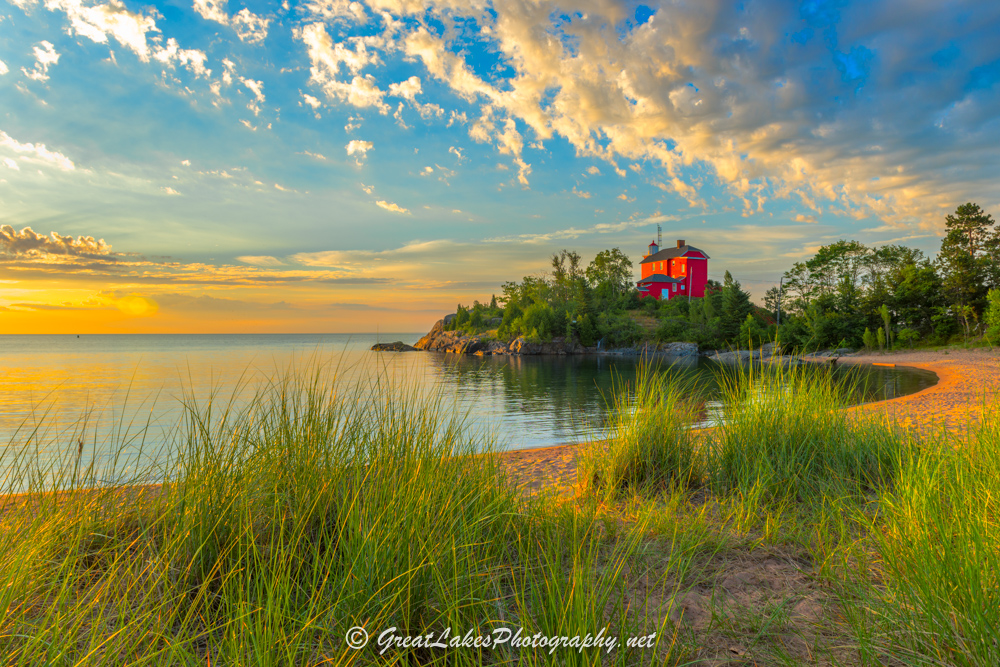
CLEANER STORMWATER = A CLEANER LAKE SUPERIOR
Stormwater is a Resource, not a Waste Product!
> The City of Marquette includes four major watersheds that naturally drain to Lake Superior–Dead River, Whetstone Brook, Orianna Creek, and the Carp River.
> But did you know that underneath the city there is a system of stormwater pipes that also drain directly to Lake Superior?
> Each time it rains (or snow melts), water from roads, roofs, sidewalks, and yards enters the nearest storm drain and makes its way to an outlet at the shore of Lake Superior.
> It’s important to keep our stormwater runoff as clean as possible, especially since most stormwater outlets are located near our public beaches.
For more information or technical assistance regarding what you can do, please contact the Superior Watershed Partnership at 906-228-6095 or info@superiorwatersheds.org.
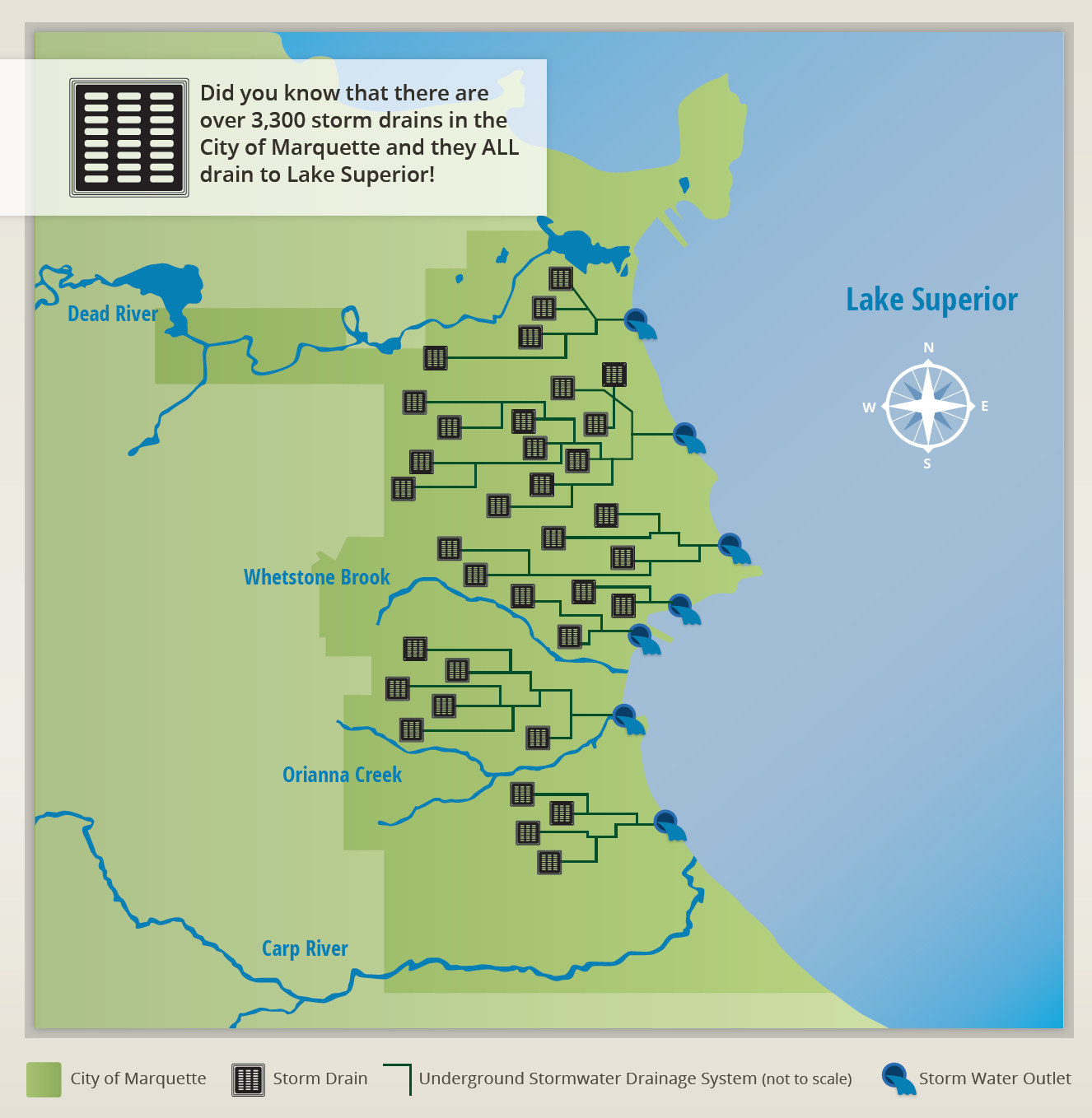
Here are some things you and your neighbors can do to help improve Marquette’s stormwater quality and better protect Lake Superior. Take the neighborhood challenge to improve our stormwater runoff quality!
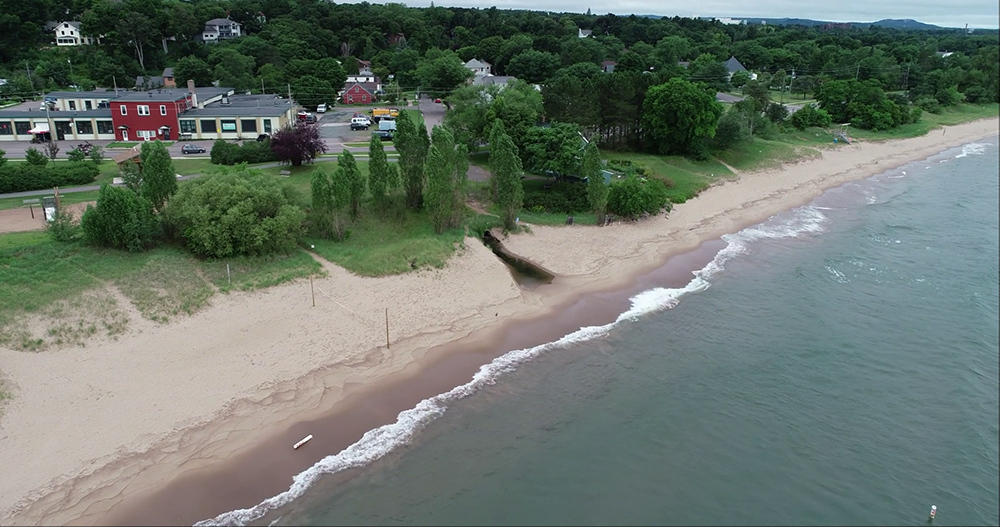
There are over a dozen large storm drain outlets, like this one at McCarty’s Cove, that empty into Lake Superior. These outlets collect runoff from over 3,300 storm drains on the roads and parking lots throughout Marquette. Keeping stormwater as clean as possible is everyone’s responsibility!
Rain Gardens: Soak Up the Rain!
A rain garden is a depressed area in the landscape that collects rain water from a roof, driveway or street and allows it to soak into the ground. Planted with native grasses, shrubs and flowering perennials, rain gardens can be a cost effective and beautiful way to reduce runoff from your property.
Rain gardens can also help filter out pollutants in runoff and provide food and shelter for butterflies, song birds and other wildlife. Starting in the spring of 2019 the Superior Watershed Partnership and the Great Lakes Conservation Corps will be launching a new rain garden assistance initiative for homeowners and small businesses in the City of Marquette.
Learn more about rain gardens: https://www.epa.gov/soakuptherain/soak-rain-rain-gardens
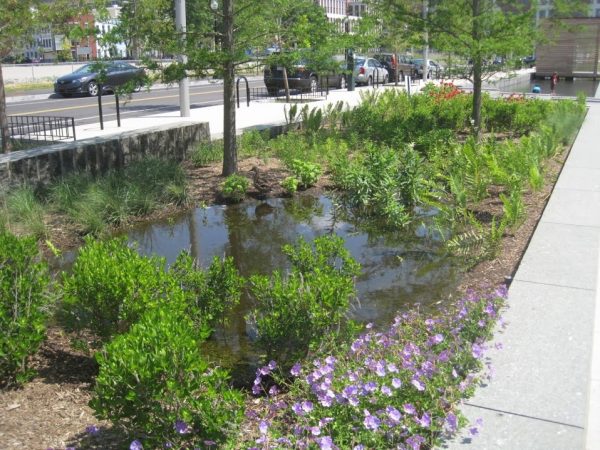
SWP Stormwater Articles
Everybody’s seen discarded cigarette butts in the street and not thought much of it – a tiny piece of trash. Se’ve all also seen them on the beaches lining Lake Superior, but what do you think when you see that? Maybe that people shouldn’t toss their butts on the beach? Read More
Fixing our problems with stormwater pollution is usually an effort taken on by adults, but it’s just as important to teach the next generation how to prevent and reduce their impact on the Great Lakes. Read More
Stormwater runoff is the major cause of water quality issues in urban and suburban areas, and is a topic of some concern around Marquette and other Upper Peninsula cities. While your city is responsible for stormwater infrastructure, there’s still a lot that individuals and households can do to make sure their impact on the stormwater system is as light as it can be. Here are some ways to help your local water quality. Read More
The top cause of poor water quality results for Lake Superior and its watersheds is stormwater runoff pollution. Stormwater runoff happens when rain or snowmelt washes chemicals, debris, household and pet waste and other pollutants into storm drains, and from there into the lake. The good news is that stormwater runoff is a problem that individuals and citizens can have a major impact in solving on a personal level. Read More
Water conservation is a big part of improving your impact on the stormwater system, and thus local water quality. Of course, making an effort to conserve water also pays off when the water bill arrives. Conserving water around your home, yard and garden will help decrease stormwater runoff pollution, and help keep Lake Superior clean. Read More
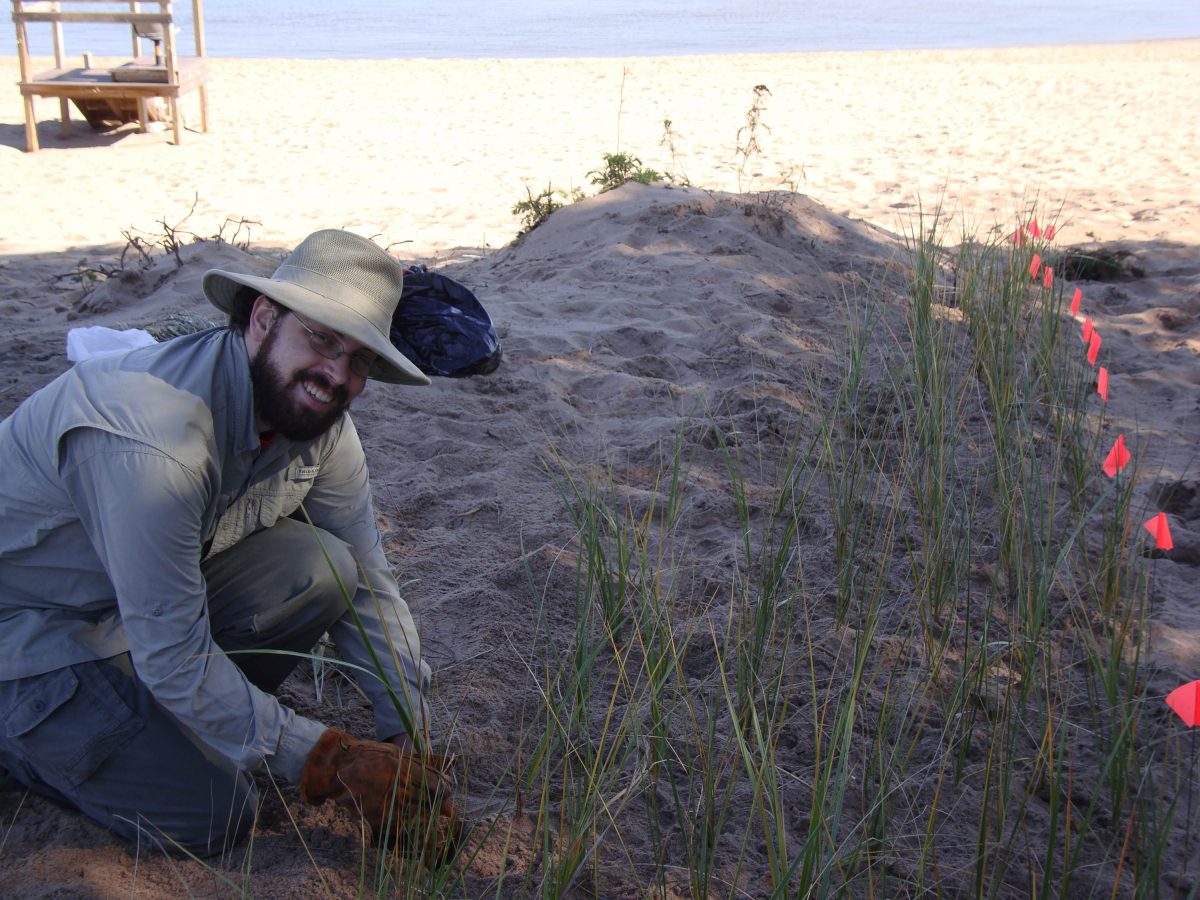
CITY OF MARQUETTE WATER QUALITY SUCCESS STORIES
Cleaner Stormwater with Green Infrastructure
This green infrastructure project was successful in improving water quality entering Lake Superior and reducing risks to human health at two public beaches by implementing green management practices to reduce bacteria and pollutants that were identified through an enhanced beach monitoring program. Water quality improvements were achieved by creating 0.7 acres of wetlands and vegetated buffers to reduce bacteria and pollutants from the Lakeview Arena open-channel storm drain and filter runoff from adjacent parking areas. The project resulted in as much as a 70% reduction in bacteria concentrations at public beaches during the first season. The project was implemented by the City of Marquette in cooperation with the Superior Watershed Partnership with funding from Great Lakes Restoration Initiative (GLRI).
Monitoring Public Beaches
The overall goal of the City of Marquette Public Beach Monitoring Program is to monitor, identify and prevent high bacterial loads in the waters associated with public beaches and take necessary corrective actions to protect the public. The City in cooperation with SWP also implements rain event sampling at storm drains that lead to City beaches, periodic water quality monitoring of storm drain outfalls, and public outreach via signs, media releases, utility bill inserts and community events.
Planting Trees to Benefit Stormwater
This unique project reduced runoff pollution in the Dead River and the adjacent waters of Lake Superior through the restoration of riparian and coastal buffers in the City of Marquette and adjacent rural townships. Restoration work completed by the SWP’s Great Lakes Conservation Corps resulted in improvement of over 40 acres of coastal and riparian habitat through invasive species removal and planting over 3,000 native trees to capture and slow the flow of runoff and filter out sediments, nutrients, pathogens, and pollutants prior to entering the Dead River and near-shore waters of Lake Superior. The project is estimated to help filter over 800,000 gallons of untreated urban runoff over the first five years.
Restoring Wetlands and Improving Stormwater
With funding provided by the Great Lakes Restoration Initiative and the Clark Lambros family the City of Marquette in cooperation with the SWP are coordinating the restoration of 12 acres of coastal wetlands that will then filter stormwater and dramatically reduce loadings of sediments, nutrients, and pollutants into the nearshore waters of Lake Superior. Scheduled for 2019 the project will disconnect the Hawley Street stormwater drain that currently empties directly into Lake Superior and redirect the flow into the newly restored wetlands.
Red Buckets Program
The Superior Watershed Partnership (SWP) in cooperation with the Marquette County Community Foundation (MCCF) began the successful Red Bucket community pollution prevention program during 2011. The program provides a free red metal bucket filled with sand to any Marquette restaurant, bar, business or organization that wants to join this community campaign to reduce cigarette litter and keep our beaches clean! The bucket also includes a maintenance scoop to clean out the cigarette butts. Show your community support and get your free bucket soon! This simple local project has been promoted by the Great Lakes and St. Lawrence Cities Initiative and replicated by communities around the Great Lakes!
Rain Barrel Cost-Share Program
The Superior Watershed Partnership (SWP) is once again offering a rain barrel cost-share program for city residents. Rain barrels are an easy way to limit the amount of stormwater leaving your property. They also save water and can significantly reduce your summer water bill. Plus, rain barrels are easy to install on most rain gutter downspouts. Cost share funding is limited and is available on a first come first served basis.
Reducing Mercury Levels
The Superior Watershed Partnership and City of Marquette worked with the Superior District Dental Society (SDDS) to implement a community-based mercury reduction program to reduce mercury to the municipal wastewater treatment facility, the Carp River and Lake Superior. Members of the SDDS (36 active dentists) were provided with detailed information regarding low cost mercury amalgam separators. Upon hearing the information, SDDS members voted unanimously to pass a resolution to voluntarily install amalgam separators in their offices. Voluntary installation of mercury amalgam separators by area dentists resulted in a 40% reduction in mercury concentrations observed at Marquette’s Wastewater Treatment Facility.
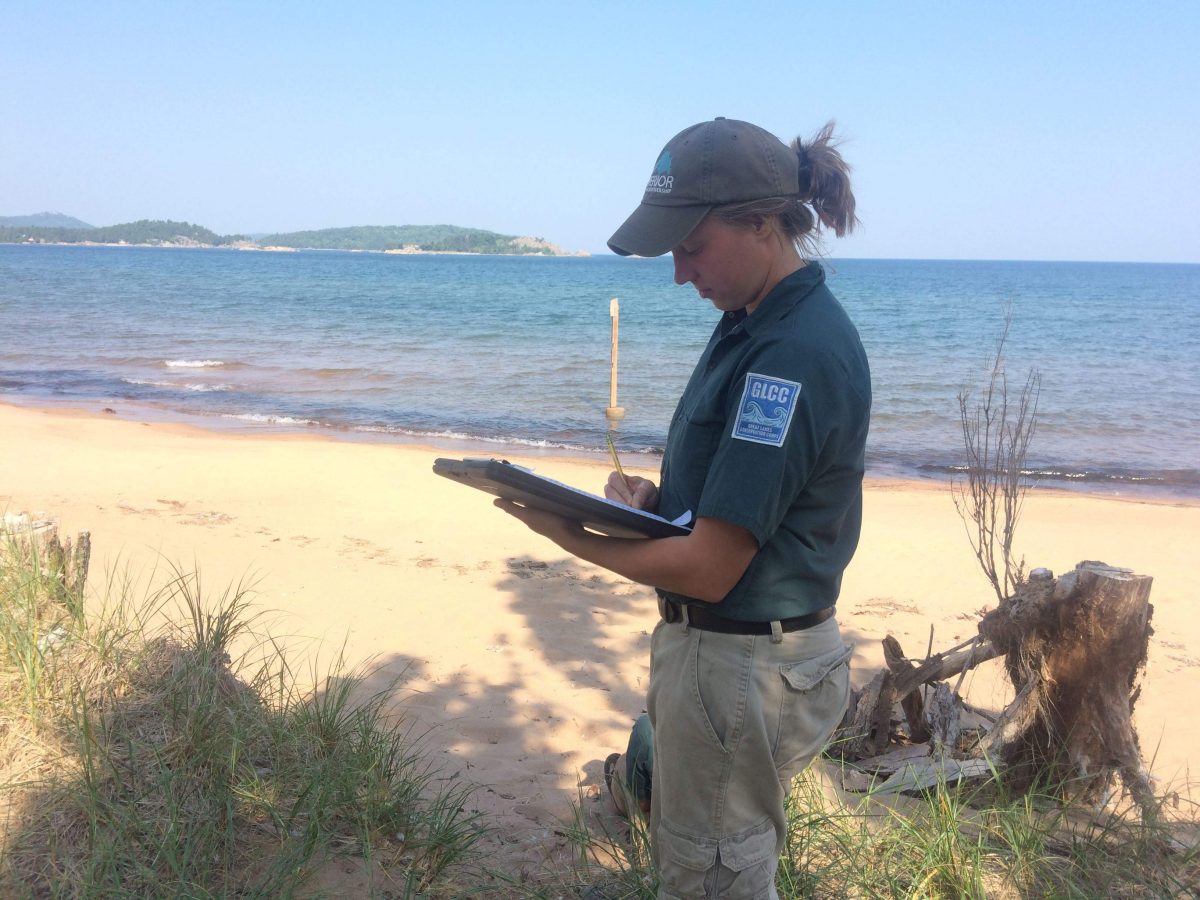
STORMWATER MANAGEMENT PLAN CITY OF MARQUETTE
Stormwater runoff—rain that runs off roads and rooftops and collects pollutants along the way—is a growing cause of water pollution across the Great Lakes basin. Excessive runoff is a growing cause of flooding and associated loss of property and economic activity.Green infrastructure (GI) reduces runoff and improves water quality by trapping pollutants before they get into the streams and rivers that drain into the Great Lakes. GI includes features like rain gardens, bioswales, green roofs, and street trees that filter and hold or slowly release stormwater.
The City of Marquette, in cooperation with the Superior Watershed Partnership, will be providing additional stormwater education resources for city residents and business owners over the coming months. Stormwater is the rain and melting snow that runs off of our lawns, our roofs, our roads, our parking lots–our watersheds.
In Marquette, virtually all of this stormwater ends up in Lake Superior either through natural drainage or through the stormwater drains you see along the roadside. Did you know that there are over 3,000 storm drains in Marquette? In addition to field projects, volunteer events, and school activities, look for a series of articles on what you can do to help keep our stormwater as clean as possible.
Topics include: around the house, lawn and garden care, pet waste, water conservation techniques, reducing cigarette butt litter, and new community engagement opportunities. These educational articles will be printed locally and will also be available on the city website (www.marquettemi.gov) and the SWP website (www.superiorwatersheds.org). Remember: stormwater is a resource we all need to protect!
1. EDUCATION, OUTREACH, & ENGAGEMENT
INTRODUCTION
Purpose: To control stormwater runoff through the thoughtful planning of stormwater collection, storage, and movement. It is important to inform and educate decision makers and the public about the basics of stormwater, the types and causes of stormwater pollution, the impacts of stormwater on local streams and rivers, and the needs for stormwater management. This chapter outlines the methodology for greater community understanding and identifies key initiatives for inspiring active participation and support of pollution prevention activities.
Education in Stormwater Management: Key to the success of any SWMP is a well-informed and knowledgeable community that is given the opportunity to provide support to municipal efforts and is well aware of the communities responsibilities and expectations. When community members are educated on the benefits, risks, and importance of stormwater best practices and issues, they tend to hold a greater sense personal responsibility and compliance with programs.
EDUCATION, OUTREACH, & ENGAGEMENT EFFORTS
Existing Programs: In partnership with the City of Marquette, the Superior Watershed Partnership has implemented the following community outreach programs:
Educational and promotional material cover various topics, including the following:
2. CLIMATE ADAPTION
INTRODUCTION
The Need for Climate Adaptation Planning: Addressing climate change through alteration of stormwater practices or land use management decisions is imperative for successful planning of stormwater management. Because utilities also must address issues related to budget, aging infrastructure, and other concerns, adaptation options that considers these issues in addition to providing greater resilience and preventative strategies to climate complications, are most effective.
Benefits of climate adaptation planning for utilities include and increase in sustainable and efficient operations, cost savings, preservation of adequate water supply, and quality and the reduction of greenhouse gas emissions.
With many climate models projecting increased variability in extreme weather events, recorded data and trends may not provide accurate projections of future climate changes. With that said, it is important to remain flexible and consider a variety of options providing a range of benefits to develop a balanced, comprehensive adaptation plan that does not overstretch resources.
Adaptation strategies that provide multiple and widespread benefits can be integrated into current asset management plans, emergency response planning, capacity development, and other decision-making processes in regard to stormwater management.
Climate Change and Stormwater: In the context of stormwater, today’s changes in climate include an increase in frequency and intensity of storms, and an increase in extreme flooding events. Other regional climate changes include warmer water temperatures, which leads to less ice on Lake Superior and inland lakes, dropping lake levels, and increased turbulence on Lake Superior.
These climate changes, along with other social and land use changes can greatly affect the intended capacity of municipal stormwater management systems. When these systems are not prepared for these fluctuations, there is risk for localized flooding or greater runoff of contaminants into local waterways.
This potential excess runoff can also wash sediment, nutrients, or other pollutants into local and regional water sources which consequently can diminish water quality, threaten drinking water sources, and complicate the water treatment process.
CLIMATE TRENDS
Marquette: Between 1981 and 2010, the mean annual temperature for Marquette is 43.5 degrees Fahrenheit and the mean annual total precipitation is 28.7 inches. The tables to the right show key climate changes (mean monthly temperature and mean monthly total precipitation) in Marquette, identified by the Lake Superior Climate Adaptation Mitigation and Implementation Plan.
The primary water concerns identified through the Marquette Climate Adaptation Plan include changes in lake levels, increased lake temperatures, increased algae, invasive species, pathogens, buying and selling of water, and population growth.
Regional Impacts: As presented in the Superior Watershed Partnership Lake Superior Climate Adaptation Mitigation, and Implementation Plan, temperatures have significantly increased in the Upper Peninsula in recent decades, with the 2000’s being the hottest decade recorded followed by the 1990’s having the second hottest temperatures.
By the year 2100, “summer temperatures in the Great Lakes region are projected to rise between 5 degrees and 20 degrees.” This means that the Upper Peninsula may feel like Northwest Illinois or possibly like Kansas by the end of the century, which has great impact of Marquette’s stormwater system functions.
The following are observed climate and coastal changes in the Western Upper Peninsula:
ADAPTATION STRATEGIES
The following list provides recommended strategies for climate adaptation as it relates to stormwater management. Each strategy falls under one of the three following categories: Land Use, Infrastructure, or Policy/Operation.
This list was developed with consideration of the Environmental Protection Agency’s (EPA) best practices in adaptation planning, the findings and recommendations of the City of Marquette Climate Adaptation Plan, and the Lake Superior Climate Adaptation Mitigation and Implementation Plan.
LAND USE
1. Protect and restore vegetated buffers on lakes, streams, and wetlands.
2. Establish overlay zones, which apply additional regulations to development within the szone, such as setbacks, lot sizes, and impervious surface.
3. Adopt net-zero runoff site plan requirements.
INFRASTRUCTURE
4. Utilize bioretention to collect stormwater runoff.
5. Use blue roofs to hold precipitation after a storm event and discharge it at a controlled rate.
6. Use permeable pavement to allow runoff to flow through and temporarily be stored prior to discharge.
7. Integrate underground storage systems to detain runoff in underground receptacles.
8. Use a stormwater tree trench to store and filter stormwater runoff.
9. Implement extended detention wetlands to reduce flood risk and provide water quality and ecological benefits.
POLICY/OPERATION
10. Promote green stormwater management, such as through a utility fee rate structure where rates are determined by the amount of impervious area on a property.
11. Institute conservation rate pricing for water.
12. Promote public education and awareness of the effects of climate change and the benefits of taking action through adaption and mitigation strategies.
3. WATER QUALITY MONITORING PROGRAM
INTRODUCTION
About: Water quality in the City of Marquette is closely connected to how stormwater is managed. Science shows that implementing stormwater BMP’s can improve water quality and clarity. Monitoring water quality is the best way to measure the efficiencies of associated stormwater BMP’s. Program evaluation through water quality monitoring is applicable to several elements in SWMP including illicit discharge detection, construction site runoff control and post-construction runoff control. The collection of water quality data in coordination with BMP performance data is especially useful in determining program success.
Water quality monitoring efforts can be qualitative observations or quantitative measurements. They can address small areas such as a localized BMP or be a holistic look at large bodies of water such as Lake Superior. A quality monitoring program will contain several types of measurements in order to truly measure the effectiveness of a SWMP.
When initiating a monitoring program, it is important to collect and evaluate historic and current data from existing monitoring activities. Data from local, state, and federal agency monitoring programs, water supply intake testing, and watershed volunteer groups are valuable sources for establishing a baseline for water quality monitoring.
Water quality monitoring should also consider hydrologic variations. Variable precipitation events directly impact annual stormwater conditions. The apparent successful implementation of a SWMP may be a result of a dry weather year. Consequently, wet years may limit the effectiveness of a SWMP implementation. Monitoring precipitation and streamflow and deducing the impacts of both will provide a more accurate picture of the SWMP’s true success or failure.
Value of Water Quality Monitoring
Water Quality Monitoring Program Goals
The goals of the City of Marquette SWMP’s water quality monitoring are to:
- Quantify baseline water quality conditions before installation of stormwater BMP’s;
- Identify types and locations of existing water quality issues so remedial actions can be implemented and the most effective policies and practices can be adopted;
- Evaluate progress in the improvement of water quality in the City of Marquette as education programs, BMP’s and improved systems are implemented and installed.
Water Quality Monitoring Program Actions
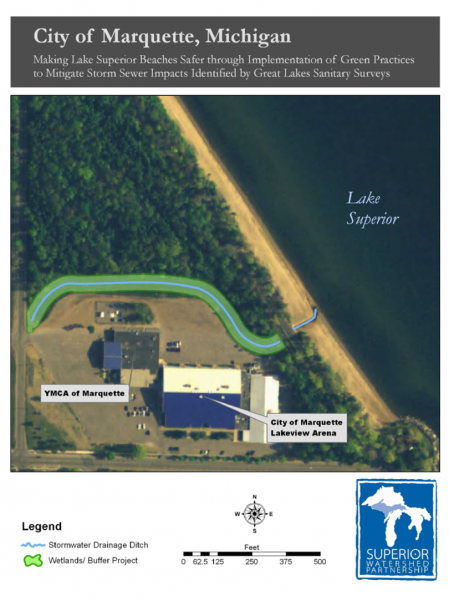
Following several years of beach monitoring in the City of Marquette, the SWP detected high levels of e. coli on the “dog beach” located just northeast of Lakeview Arena along Lakeshore Blvd. Contributing to this problem was the storm drain outfall onto that beach and located to the northeast of Lakeview. By incorporating a combination of green management practices, including increasing the riparian buffer, planting native wetland species, and reducing the use of pesticides, outcomes include increased water quality and a safer beach.
Rain barrels are an easy and inexpensive way to catch storm water run off from roof tops. With funding from the Great Lakes Restoration Initiative, the SWP offered rain barrels at a reduced cost for Marquette residents.
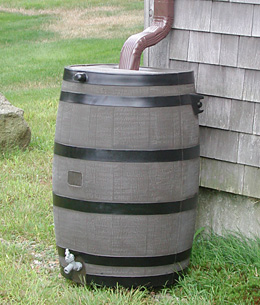
The Carp River Watershed in Marquette County and the issue of mercury. This report outlines the issue.
Coastal Wetland Restoration
The SWP partnered with the City of Marquette to develop the Coastal Wetland Restoration Plan as an off-site wetland mitigation location for Marquette’s extension of McClleland Avenue.
Pictured below is the final wetland restoration at Presque Isle.
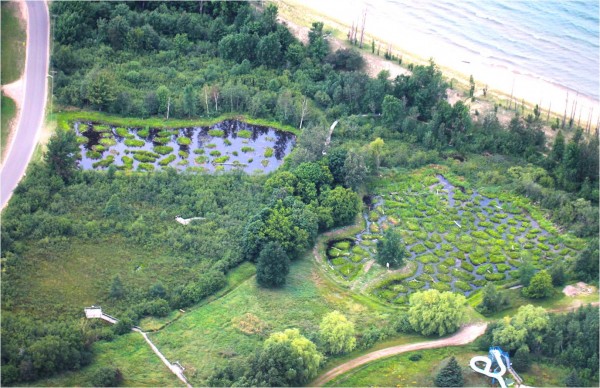
Resources for Learning
Coastal Wetland Restoration
1. Determine location.
2. Determine soil type.
3. Determine the size of rain garden needed to handle your stormwater.
4. Determine the number of plants needed for your rain garden.
5. Choose appropriate plants; plants in the low spot of the rain garden need to be able to tolerate wet soil conditions with standing water and periods of dryness, plants on the sloped edge of a typically designed rain garden usually have a medium tolerance to water, and plants on the edges are for dry soil conditions. Native plants are also the best choice for the raingarden because the roots are deeper, allowing for better drainage of water and they also require less care because they are appropriate for weather conditions in your area. Most have long tap roots that are able to acquire their own water so that once the plants are established watering isn’t necessary.
6. Order plants as soon as possible. Native plants are not always in stock so ordering them several months before you need them is ideal because the nurseries have time to grow exactly what you want. Order at least 4 weeks before you need them but the sooner the better so you get the plants you really need. Many of the plant suppliers are not local so delivery time needs to be considered.
7. Order seed if appropriate. Many people planting rain gardens do a combination of plugs and seed mix to be most cost effective and ensure success. A native rain garden seed mix (sunny or shady) can fill in areas where your chosen plants may not thrive for one reason or another. You could also choose to order specific seeds of only the plants you chose to plant from a supplier as well. Not everyone uses seed along with plants when designing their rain garden. Some choose to use only seed mix and no plants as it is a cheaper option. It does take longer to get established from seed only.
8. Excavate.
9. Soil amendment (compost). You may want to amend your soil, adding additional nutrients to give your plants an extra boost to get established.
10. Mulch with 2 inches of double shredded bark; a natural, undied bark is preferable.
11. Maintenance. Weeding may be necessary the first few years and once plants become established some may need to be thinned.
